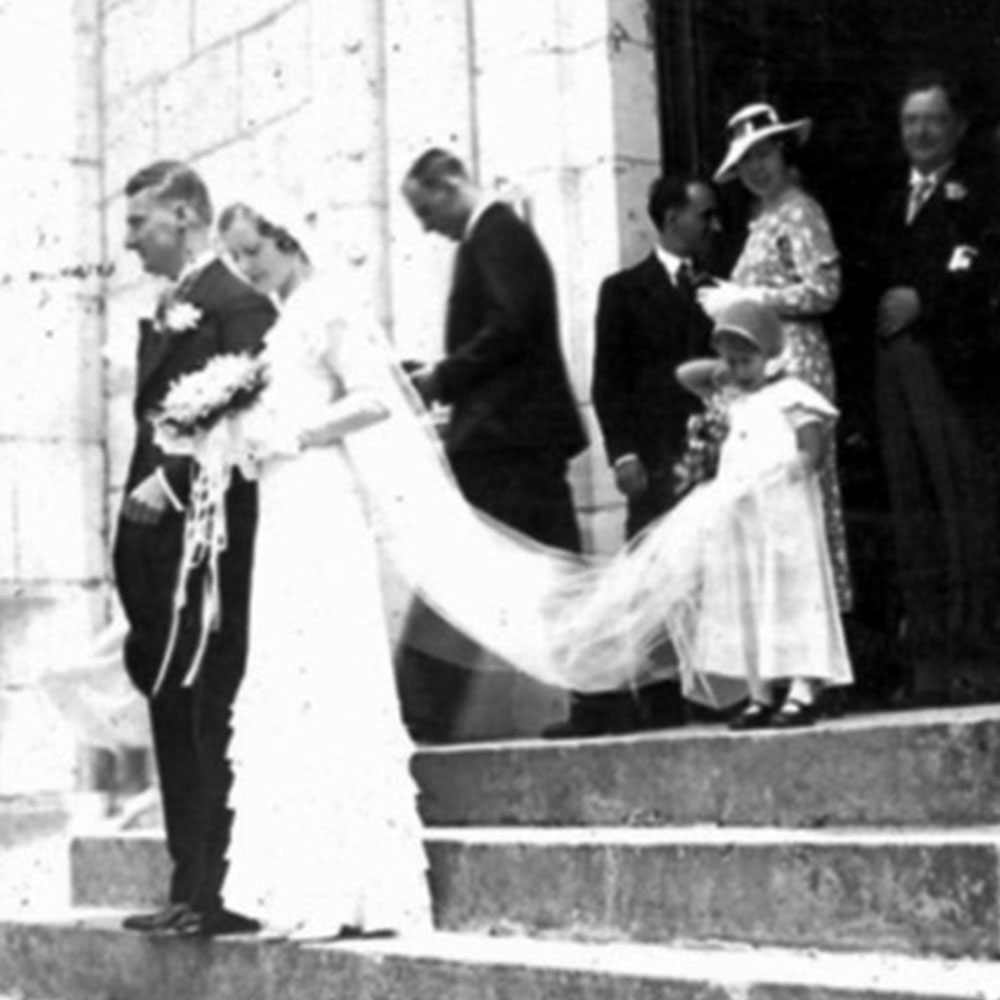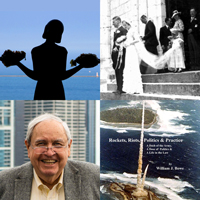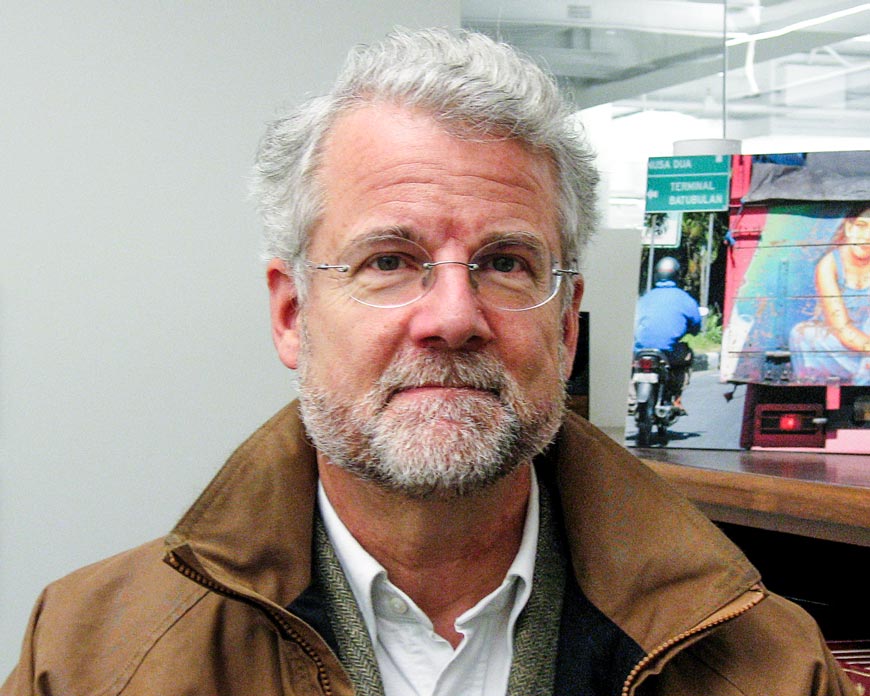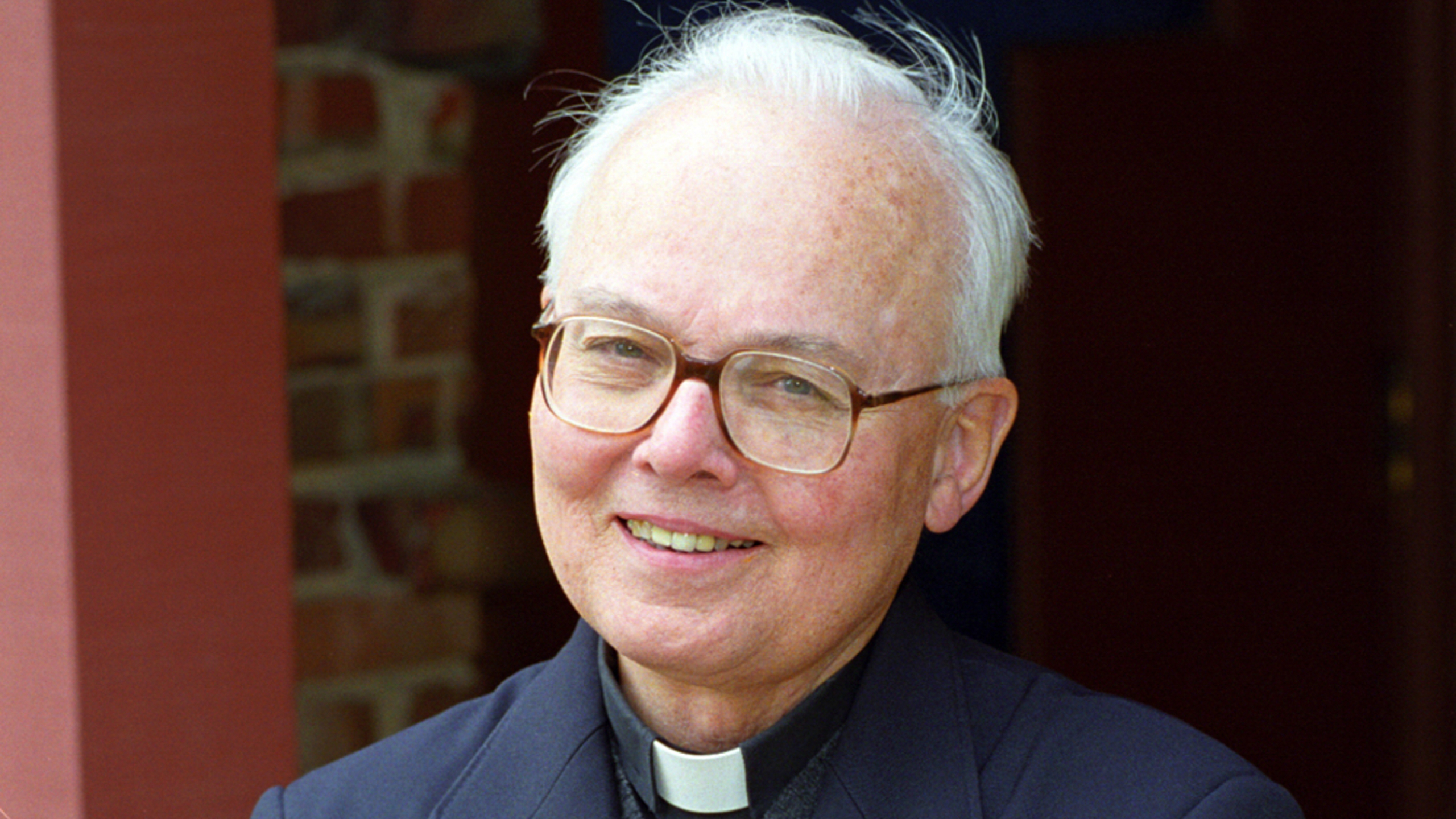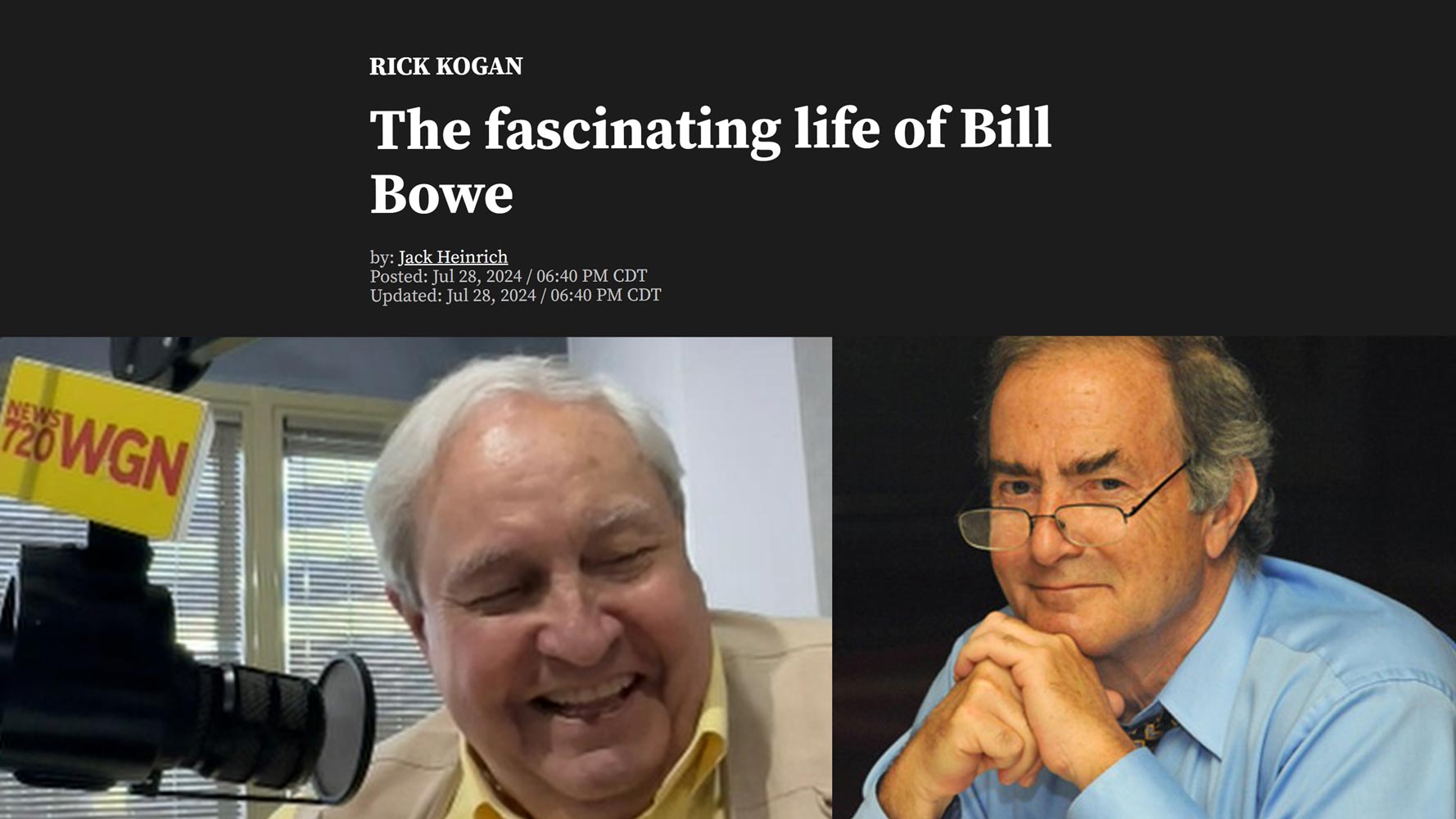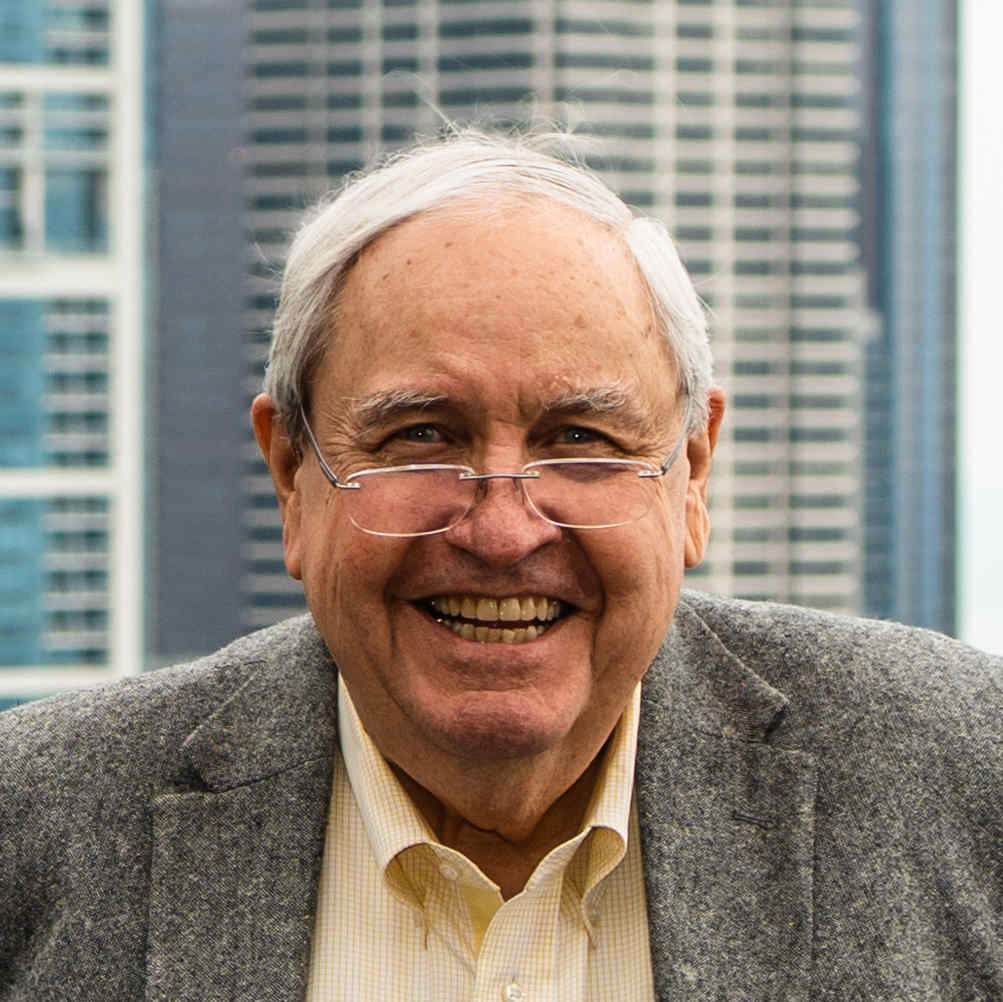
Recruitment as a General Counsel
Roan & Grossman had grown modestly in the 1970s. I was made a partner sooner than many of my law school peers in large law firms, notwithstanding my three- year absence in the Army. I’d sometimes get antsy when business slowed down and I didn’t have enough work to do. When I was busy, I was always a happy camper.
My mother had died in early 1979, and Julia Bowe had left their apartment by then for a nursing home. Single again, I had moved from Belden to a nearby townhouse I purchased on Larrabee Street in the Lincoln Park neighborhood. It had two units, a duplex that I lived in upstairs, and a one-bedroom garden apartment below that I rented out. Thus began my long career in life as a part time landlord. In my social life, I had been dating Cathy Vanselow for a while and I was thinking seriously of asking her to marry me.
This was the lay of the when a litigator friend at Roan & Grossman sprung on me a job opportunity he thought I would fit me. He said one his former professors at Northwestern University Law School had asked him if he knew anyone who might be interested in becoming general counsel of a fast-growing direct mail company. He said he had immediately thought of me, and I should let him know if I was interested. I was initially curious about the opportunity, but not particularly excited when I learned the company mostly sold plates of some kind or another.
Then I learned that the business involved was owned by the son of John D. MacArthur, reportedly the third richest man in the country when he recently died. The son, Rod MacArthur (J. Roderick MacArthur), was also a director of the John D. and Catherine T. Mac Arthur foundation, the beneficiary of most of the senior MacArthur’s estate. Rod’s main business at the time was the direct marketing of collector plates. It had grown very rapidly in recent years and was now at a size where it would be more economical for it to have lawyers in-house rather than remain completely reliant on outside law firms. Of particular interest to me was the fact that Rod wanted a lawyer at hand to advise him on his burgeoning dispute with his fellow Foundation directors. The prospect of being involved in this indirect way at the birth of one of the country’s largest foundations was an attractive aspect of the work. All of these items made the situation interesting enough to look into further. In short order I met with 58- year-old Rod MacArthur and his 31-year- old Executive Vice President Kevin McEneely.
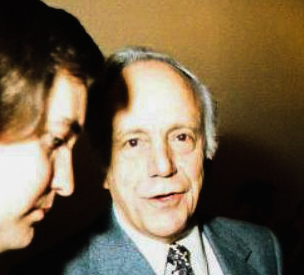
Rod MacArthur at my wedding 1979
The heart of the business of The Bradford Exchange at this time was selling decorative collector plates that were to be displayed on a wall or put on a knickknack shelf. They were not to be eaten off of or, God forbid, put in a dishwasher.
The rampant inflation afoot at the time was having a wonderful effect on the collectibles business of Bradford. With a modest aftermarket in the sale of collectible plates, the plate you bought for $29 the year before was often worth considerably more the next year. This was not entirely a surprise. With the bill coming due for the extraordinary national expenditures during and after the Vietnam War, inflation in 1979 was running at over 11%. President Jimmy Carter would lose the election the next year in consequence.
Rod MacArthur was delighted the way the business was taking off, though with his father’s recent death, he was increasingly devoting his attention to his role as a director of the John D. and Catherine T. MacArthur Foundation. When his father had died at the age of 81 in 1978, most of his wealth had been left to the Foundation. He made his longtime attorney, William Kirby, the first head of the Foundation. I knew a little bit about Kirby, having known his daughter when both of us were attending the University of Chicago Law School. According to Kirby, John MacArthur had said to him, “I’m going to do what I do best; I’m going to make (money). You guys will have to figure out after I am dead what to do with it.” Kirby explained the Foundation was created because in 1970, MacArthur thought his will “was a disaster from a tax and estate planning perspective. The federal government would take most of it in taxes.”
The senior MacArthur had two children with his first wife Louise, Rod and his sister Virginia. He divorced Louise when Rod was 14 and married his then secretary, Catherine T. Hyland in 1937. The second Mrs. MacArthur was closely involved in the growth of his insurance empire and real estate investments. For many years towards the end of his life, MacArthur conducted his widespread business affairs from a booth in the Colonnades Beach Hotel coffee shop, in Palm Beach Shores, Florida. At his death he owned more than 100,000 acres of prime real estate in Florida, much of it in Palm Beach County.
John MacArthur had served in the U.S. Navy and Canadian Royal Air Force in World War I. He then had started working in an insurance company owned by his brother Alfred. A gifted salesman, during the depression he had bought a predecessor insurance company. This later grew into his estate’s main asset, Bankers Life and Casualty Co. Over the decades that followed, with multiple acquisitions and shrewd real estate investments, he had turned Bankers Life into a successful and enormous insurance giant.
In the course of my interviews with both Rod and Kevin, I was treated to their thrilling tale of how Rod had started the company while working for his father at Bankers Life. When the little collector plate company began to take off, Rod had to wrest control of the enterprise away from his father. The struggle had included hijacking plate inventory from a warehouse and, in the telling, ultimately freeing Rod in his middle years from decades of subordination and tight control by his father.
While the story supposedly had a happy ending, with father and son fully reconciled before his death, I had my doubts. It smacked of being a better tale for public consumption than the likely reality. Rod’s stories of his life working for his father were mostly focused on his having consistently achieved business breakthroughs that went unrecognized and unrewarded by his father. Rod MacArthur’s struggles with the Foundation’s initial board of directors loomed large following his father’s death and it certainly appeared a major dispute over the management of the Foundation would be unfolding.
I was also intrigued and attracted to the idea of leaving private practice and getting more closely involved in the running of a business. Also weighing in the balance was the fact that staying with the law firm was not without risk itself. Roan & Grossman in the 1970s had not grown at an exceptional pace, and, after being defeated in his run for mayor in 1975, Bill Singer had left to join the Kirkland & Ellis law firm. This had had taken away one of the firm’s better business getters for the future. Given that there was a real risk the firm might struggle in the future, I had to take that into serious consideration also in deciding whether to accept the offer to become The Bradford Exchange’s General Counsel.
Finally, much like my decision after leaving the Army to join Roan & Grossman instead of returning to Ross, Hardies, I decided to again leave the certainty of a prior, known experience for the unknown world of what lay ahead. Keeping a toe in my last pond, I acceded to Roan & Grossman’s unforeseen request that I remain Of Counsel to the firm following my departure. While fully committed to my career change, I figured that if life in my new position somehow went awry, keeping some form of tie to my old firm couldn’t hurt. On this basis, I began my new job as General Counsel of The Bradford Exchange.
Legal Training
I had only been at Ross, Hardies 11 months before I left for the Army. When I left the Army, I was convinced I’d forgotten whatever it was I might have learned in law school or Ross Hardies. As I started the new chapter of my working life at The Bradford Exchange, I began to see I’d gotten all of this wrong. I began to realize that the intellectually rigorous education of the University of Chicago Law School and the role models of its extraordinary faculty of the day, had ingrained in me fundamental habits of applying reason and logic to the messiest problems presented to me by my legal clients. I began to think of the practice of law as simply applying high level common sense to the most tangled legal problems faced by a business. While technical competence in the various laws that might underly a problem was an ongoing requirement, I learned that you can always take time to study and master that, but you always have to pour that learning through a sieve of common sense and a practical assessment of how other people and courts might deal with your insights and recommendations.
Ross, Hardies had represented Peoples Gas, utility magnate Samuel Insull’s flagship and Chicago’s major supplier of natural gas for its cold winters. It also had the Northwestern Railroad, a host of major automotive enterprises, and highly regulated electric and telephone utility companies for clients. Newly minted lawyers hired into law firms with these kinds of clients needed rigorous early training if there were to grow into valuable senior attorneys and partners at the firm. With the high fees able to be charged these large clients, the larger law firms were able to construct serious post- law school training programs for their youngins.
Because of this structure, and to my great lifelong benefit, I received a first-class education in post graduate legal skills at the very beginning of my career at Ross, Hardies. This meant learning how to pay close attention to the smallest of details and the ability to digest enormous mounds of paper in search of the rare legal truffle that might be hidden within. On the Do Not Under Any Circumstances side of this training, you were clearly warned of the consequences of errors of any sort or of any magnitude. The high end of the penalty scale was dismissal or perhaps denial of an expected bonus. These penalties tended to be reserved for obvious and unforgivable misstatements or misjudgments on legal matters. This went both to research provided by young associates to partners and, God forbid, having these no-nos presented to clients. The low end of the penalty scale, reprimands, and pedestrian legal assignments was reserved for poor proofreading and the consequent escape of misspellings and typographical errors in legal research memoranda or letters.
Though at the time I hadn’t thought I’d learned much of anything in my first legal job before entering the Army, in later years I realized that in fact I’d had a first-rate hands-on education.
It fell to me to organize the legal structure of Bradfords nascent international expansion in Europe. Working with outside lawyers specializing in international tax law exposed me a new area of expertise that would become particularly useful in later years when I served as General Counsel for Encyclopaedia Britannica, Inc. EB had probably 50 or so subsidiaries in many different countries of the world and a highly complex international organization both in how it was managed, and also in how its businesses were legally structured. The latter factor was in many cases at least partly driven by the desire to minimize the payment of taxes. Getting this part of a business right meant knowing the difference between tax avoidance, every person’s, or company’s natural goal and right, and tax evasion, which is illegal and can result in severe civil or even criminal penalties everywhere.
Hiring Lawyers

I also got my first taste at Bradford in managing litigation outside the United States. Bradford’s collector’s plates were usually made from isolated kaolin clay deposits in China, Japan, and Europe. With application of artwork applied, they were then fired in limited, numbered volumes and delivered to Bradford in the U.S. for sale around the world. Bradford would then export them from the U.S. for sale by its own subsidiaries or other local dealers. When the plates crossed the border at this point, a custom’s declaration of their value was made when the imported plates came in bulk into the country of ultimate sale.
At one-point Canadian customs authorities disputed the value assigned to Bradford’s imports, claiming it was losing customs duties that were due as a result. After concluding the Canadian valuation calculation was faulty, I went shopping in Canada for a lawyer there who could represent the company in putting forth its arguments.
At the time in Canada and other British Commonwealth countries, lawyers weren’t just lawyers, they were either solicitors or barristers and never the twain did meet. Solicitors generally only did office work, though they might appear as an advocate in lower courts. Barristers were trial lawyers and had a monopoly on trying the bigger cases in the trial and appellate courts. This meant I needed a barrister. Early in my search, I discovered a subset of barristers known as Queen’s Counsel. This group turned out to be where I found my lawyer. These advocates are appointed by the Canadian Minister of Justice. All were senior trial lawyers who were recognized for their contributions to the legal profession and public service with the Queen’s Counsel (Q.C.) designation. Later in my career with Encyclopaedia Britannica, I also had a chance to be similarly guided through major disputes in trial and appellate courts of The United Kingdom and Australia.
Rod MacArthur wanted outside lawyers to help him in the early stages of his dispute with his fellow directors of the John D. and Catherine T. MacArthur foundation and asked me for guidance. I took Rod on a round of interviews with several of Chicago’s most prominent attorneys. I began by introducing him to Burt Jenner, a founder of Jenner & Block law firm. Jenner struck both Rod and me as not right for the job. He clearly seemed to be in declining health and lacking the mental acuity of his better days.
Kirkland & Ellis was also on the list to talk to. When I was in law school and beginning to interview firms for a clerkship, my father’s brother, Augustine J. Bowe, had left the Bowe & Bowe law firm to become the Chief Justice of the Municipal Court of Chicago. He suggested I ask for an appointment with one of the Kirkland’s founders, Weymouth Kirkland. When I expressed doubt as to whether Kirkland would take time to see lowly me, Gus said not to worry. He said he and Weymouth had known each other for decades. I later discovered that these contemporaries had met not as leading Chicago lawyers who might have met as allies or adversaries, but because Gus and his wife Julia had bumped into Kirkland and his wife Louise on summer trips to France in the 1920s. Kirkland did indeed see me in his office in the late 1960s, though, like Burt Jenner on my later visit with Rod, he also in declining health.
With the Kirkland firm on my list for the current assignment, I introduced him to its most prominent litigator of the day Don Reuben. Reuben was much in the public eye, having such diverse clients as the Chicago Tribune and Time Inc., and sports teams such as the White Sox, Cubs and Bears. Add to them, the Illinois Republican Party, the Catholic Archdiocese of Chicago, and Hollywood personalities Zsa Zsa Gabor, and Hedda Hopper. Reuben wasn’t hired then, but several years later, when Rod finally did sue his fellow MacArthur Foundation directors, Rod was represented by other Kirkland & Ellis trial lawyers. Reuben was out of the picture at that point, because not long after Rod and I met with him, he had been canned by the firm in what the Chicago Tribune called, “an act of back-stabbing plotted while Reuben was on a European vacation.”
Copyright and Trademark Issues
The marketing of collector’s plates involved a good deal of intellectual property law. The plate designs were mostly protected by copyright laws that prevented the artistic work from being copied. Bradford had created a magazine concerned with the hobby. Its content needed copyright protection, too. The was done with filings in the Copyright Office of the Library of Congress. Then there were the names of the many subsidiary companies that sold the various collector plates. “Bradford” and the names of these businesses had to be trademarked. This was accomplished with filings in the Patent and Trademark Office of the U.S. Department of Commerce and with various state government offices. This concentration and hands-on training helped guide my later career as an intellectual property lawyer when I later served as General Counsel with United Press International, Inc. and Encyclopaedia Britannica, Inc.
During my tenure, Bradford had substantial litigation over copyright and trademark issues of the day. This marked the real beginning of my managing complex intellectual property disputes. At Bradford they involved lawsuits asserting copyright or trademark infringement and in defending against these claims.
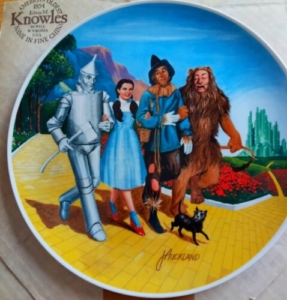
In the landmark copyright case, Gracen v. Bradford Exchange, 698 F.2d 300 (7th Cir. 1983), Judge Richard Posner’s opinion for the 7th Circuit Federal Court of Appeals, upheld Bradford’s defense of a copyright infringement claim. The lawsuit involved a painting of actress Judy Garland in MGM’s famous movie, The Wizard of Oz and Posner’s opinion was memorable both for its erudition and its setting of a important legal precedent.
Hammacher-Schlemmer
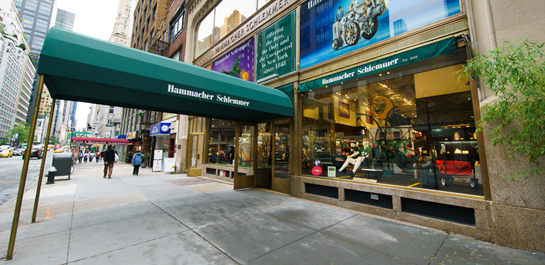
Nonetheless, during this period he had acquired the well-known New York City-based retail and catalog business of Hammacher-Schlemmer & Co. Purchased from the conglomerate Gulf + Western, I advised him in the final negotiations that took place in the early 1980s in what was then known as the Gulf + Western Building at 15 Columbus Circle at the southwest corner of Central Park. At the time, Gulf + Western was one of America’s largest companies. As we entered the building, we passed through a group of nuns protesting outside. They were apparently unhappy with Gulf + Western’s policies in the West Indies. The company owned thousands of acres in the Dominican Republic, replete with sugar plantation and cattle. When Bradford had won the auction for Hammacher, Gulf + Western’s president, David (Jim) Judelson asked the two of us to join him for lunch in his private dining room at the top of the building. As the elevator arrived at the executive suite, two armed security guards with weapons drawn were there to greet us. If the nuns downstairs weren’t the threat, Gulf + Western certainly thought it had bigger unseen enemies lurking about.
The small dining room had large windows offering spectacular views of Manhattan. At the time, Gulf + Western was only a tenant in the building, not its owner. Its owner oddly enough was Bankers Life & Casualty Co., the massive insurance corporation established by John MacArthur. It was the primary asset willed to the MacArthur Foundation upon his death. Knowing that Rod was MacArthur’s son and a director of the Foundation, Judelson joked that if the window blinds needed to be repaired, he now knew who to call.
Not long after Bradford closed the purchase of Hammacher that day, the Foundation, under a legal requirement to divest its operating businesses, sold the Gulf + Western Building and 18 other New York properties for over $400 million. In time, Gulf + Western fell apart, and in 1994, architect Philip Johnson oversaw the renovation of the building and it was reopened as the Trump International Hotel and Tower.
Bradford Then and Now

Rod MacArthur had primarily bought Hammacher to expand its mail order catalog business. Founded in 1848, Hammacher remains America’s oldest running catalog. Before long, he had added to Hammacher’s sole retail operation retail stores on Chicago’s “Magnificent Mile” on Michigan Avenue and on tony Rodeo Drive in Beverley Hills, California. Today, only the Manhattan retail store on 57th Street survives. The company’s original collector plate mail order business has been vastly expanded to a whole range of other collectibles. The product line now includes décor, jewelry and watches, apparel, bags, shoes, miniature villages and trains, music boxes, die cast cars, Christmas ornaments, dolls, coins, $2 bills, personal checks and stationary. Not to be left out, you’ll also find Disney, Star Wars, NFL and Harry Potter collectibles. Along the way, the company has also changed hands, from MacArthur’s heirs to its employees.
A Bradford history written in 2006 explained the company’s origins this way:
Contrary to popular opinion, J. Roderick MacArthur, the entrepreneur and marketing genius who founded the Bradford Exchange more than three decades ago, did not invent collector plates. When, in a characteristically bold move, he launched what would become his Bradford Exchange by liberating his merchandise from his insurance-mogul father’s locked warehouse, what Rod MacArthur did was to understand the plate market in a new way. When the Bradford Exchange issued its first “Current Quotations” in 1973, listing the current market prices of all the most traded Bradford Exchange collector’s plates, it re-defined plates as a unique art commodity that is actively traded, with uniform buy/sell transactions, on an organized market. The original mission of the Bradford Exchange was simply to monitor the plate market… The ideal, however, was to create an electronic bid-ask marketplace, operating much like a securities market, where transactions could be made instantaneously. In 1983, such a computerized marketplace became a reality. However, with the new ease and increased volume of trading, the emphasis at the Bradford Exchange gradually shifted from monitoring the secondary market to creating and marketing an ever-growing variety of collectibles.
Of course, this version of the company’s history sugarcoats the reality of what was really going on in the late 1970s early 1980s. Bradford’s marketing targets in selling collector plates were people with modest incomes who now could not only buy art like a real collector, but then they could sit back and watch their wise plate investment go up in value. Furthering the idea of plate scarcity, collector plates were primarily sold at the time as “limited editions,” never to be made again. The marketing of the collector plates before I arrived had been sufficiently aggressive to cause the federal Securities Exchange
Commission to launch an investigation into whether Bradford was failing to comply with the securities laws. The idea was that by implying the value of collector plates would likely increase in value without any effort on the part of the buyer, the plate might meet the definition of a security. Bradford had dialed back its advertising and avoided formal SEC action. In fact, it found an unexpected marketing upside to the SEC threat. Its promotional material could now proudly announce that collector plates were “not securities!”
However, the 2006 company history rewrote history when it claimed that Bradford had to diversify its product line beyond plates after 1983 because the ease and increased volume of trading on its computerized marketplace for secondhand plates, “tended to depress market prices.”
The truth was that the plate market went south because the rampant inflation in the country that hit 22% a year briefly in Jimmy Carter’s one-term presidency was plummeting by 1983 under his successor Ronald Reagan. Inflation fell from 10.3% in 1981 to 3.2% in 1983. The attendant recession of Reagan’s first term, coupled with inflation being tamed, simply killed the marketing theme that limited edition collector plates were likely to rise in value over time.
The collector plate runs were typically called “limited editions” because they were limited by number of “firing days.” Left unmentioned was that the industrial scale kilns used in the transformation of clay blanks into decorative plates could produce in the specified firing days tens if not hundreds of thousands of plates.
The company began to successfully reorient its business by striking an arrangement with the Norman Rockwell Museum. This appeased some of the Rockwell’s heirs in the process. Prior to this, since Rockwell’s famous paintings of Americana scenes were in the public domain, Bradford and other sellers of collector plates had had free reign to use his artwork without paying any royalty. By sharing the largess from this business for the first time, Bradford was able to become the “official” distributor of the beloved master’s new artifacts. This helped to solidify the company as the one to go to for “legitimate” Rockwell collector plates.
By 1983, Rod MacArthur’s was spending less and less time on Bradford business as his attentions had continued to focus more and more on Foundation affairs. Responsibilities for the day-to-day management of the company increasingly fell to his young steward
Kevin McEneely, by then 35-years-old. Their relationship had been forged when McEneely had abandoned the Bankers Life mother ship with Rod and helped him spirit away the Bradford inventory from Rod’s father a decade before. While McEneely had had no specialized business training, he was personable, and in a smooth sailing ship with Rod calling the shots on the direction of the company, and a financially astute President with an accounting background in place, he had proven up to the job of being Rod’s second banana. However, when Rod abruptly fired Bradford’s current President, it quickly became clear that McEneely was not remotely capable of filling the gap. The concern began to drift and problems began to build up.
As General Counsel, I reported directly to Rod, not McEneely. I increasingly thought that I had a duty to alert Rod to the gap I saw, because it was one that was already beginning to have negative consequences. Initially, Rod was very concerned about the message I had conveyed to him and had arranged for a third party to take a deeper look at the state of the senior management. When interviewed as to what I thought the solution was, I said that besides the obvious option of an outside hire, the company had recently hired an executive to manage Hammacher and I thought he had skill set and breadth of experience to serve as the company’s chief operating officer under Rod.
While not privy to the discussions Rod had with others, when he did circle back to me on the subject, he made it clear that he was not going to replace his stalwart, at least not at that time. That meant that I was going to be hitting the road. Not wanting to wait for the axe, I told quickly told him that it appeared he had lost confidence in my advice and that I was offering my resignation. He seemed as relieved as I was that the conversation had been as brief and trouble free as possible.
As fate would have it, shortly after I left, Rod was diagnosed with pancreatic cancer and died after a brief illness. My own diagnosis of the management issue the company faced just months before appeared to be confirmed when the first thing his family did after his death was remove McNeely from the business and install the person I had pointed to as the only sensible candidate to replace him. While not right for Bradford at the time, McNeely went on to have an otherwise normal career as with several other Chicago area companies.
After leaving Bradford, I briefly went back to private practice in the Loop. I had by that time dropped my affiliation with Roan & Grossman as Of Counsel and became Of Counsel to a firm recently started by two of my former partners there, Bill Cowan and Charles Biggam. I wasn’t there long, as I soon moved to Nashville with Cathy and Andy when I took on the job of organizing United Press International’s first internal law department as UPI’s Assistant General Counsel.

